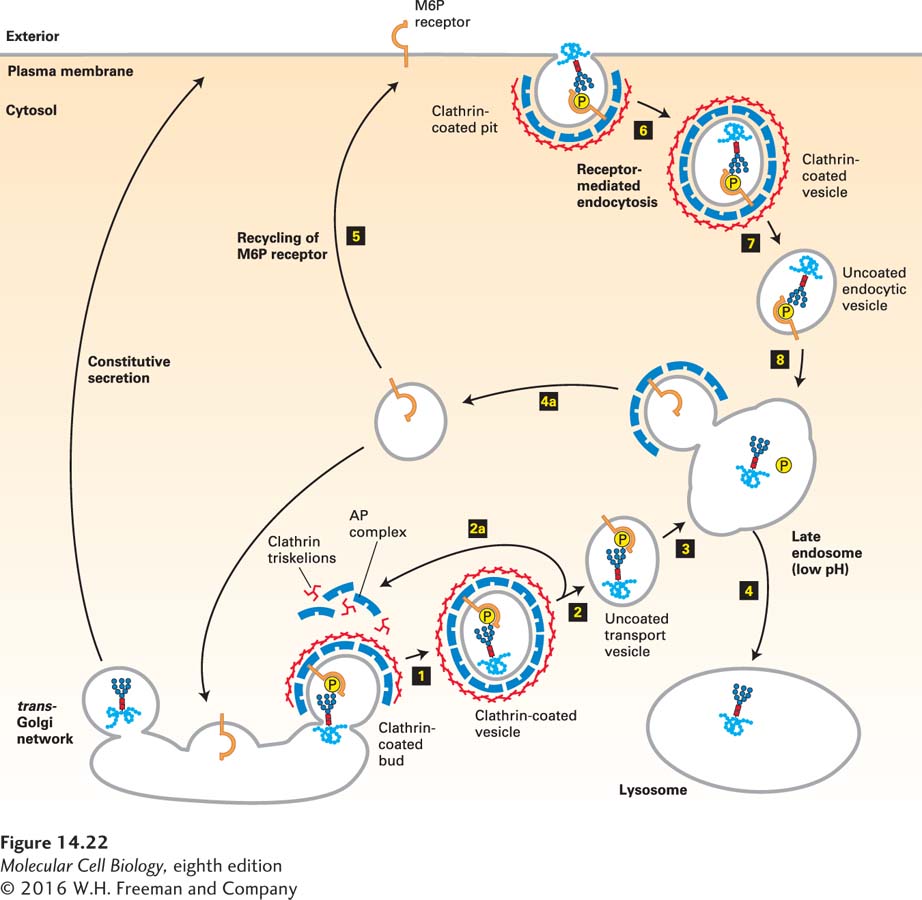
FIGURE 14- 22 Trafficking of soluble lysosomal enzymes from the trans-Golgi network and cell surface to lysosomes. Newly synthesized lysosomal enzymes, produced in the ER, acquire mannose 6- phosphate (M6P) residues in the cis-Golgi (see Figure 14- 21 ). For simplicity, only one phosphorylated oligosaccharide chain is depicted, although lysosomal enzymes typically have many such chains. In the trans-Golgi network, proteins that bear the M6P sorting signal interact with M6P receptors in the membrane and thereby are directed into clathrin/AP1- coated vesicles (step 1). The coat surrounding released vesicles is rapidly depolymerized (step 2), and the uncoated transport vesicles fuse with late endosomes (step 3). After the phosphorylated enzymes dissociate from the M6P receptors and are dephosphorylated, late endosomes subsequently fuse with a lysosome (step 4). Note that coat proteins and M6P receptors are recycled (steps 2a and 4a), and that some receptors are delivered to the cell surface (step 5). Phosphorylated lysosomal enzymes are occasionally sorted from the trans-Golgi to the cell surface and secreted. These secreted enzymes can be retrieved by receptor- mediated endocytosis (steps 6–8), a process that closely parallels trafficking of lysosomal enzymes from the trans-Golgi network to lysosomes. See G. Griffiths et al., 1988, Cell 52:329; S. Kornfeld, 1992, Annu. Rev. Biochem. 61:307; and G. Griffiths and J. Gruenberg, 1991, Trends Cell Biol. 1:5.
[Leave] [Close]